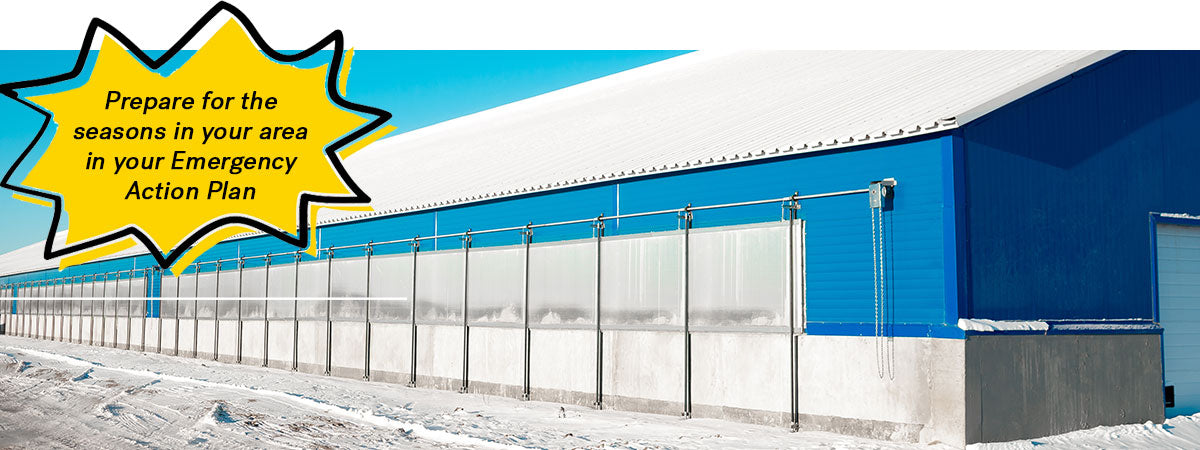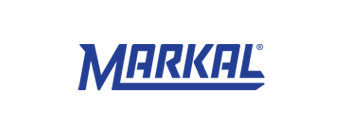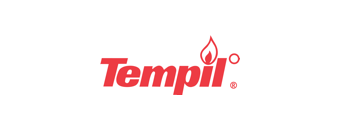Complete Your Farm Disaster Ready Kit with All-Weather®

Hi, thanks for dropping in! We share advice, tips, information, and stories about livestock marking and animal identification in the agricultural industry. As the leader in the livestock marking category since 1945, we're proud to support the hardworking farmers and workers who care for and feed the world around us. Join our community. Signup for our emails or follow us on social media and share your mark. 🖊
From sunrise to sunset, you work hard to keep your farm thriving and productive. You know what to expect from your farm’s daily operations including how your animals are going to react in normal situations, however, sometimes the unexpected happens and disaster strikes. Is your farm ready to handle it?
Agricultural Disasters
Like any other home or workplace, farms are not immune to the fallout of emergencies and disasters. Disastrous events can be natural, or people-made and can happen anywhere, at any time, and be caused by many different factors. Examples of common disasters related to farming and livestock are:
|
|
The best chance of recovery from unexpected events like these, is to plan and prepare for the possibilities ahead of time. OSHA and Ready.gov have lists of hazards to be aware of that should be considered in your disaster response preparations as well as tips for planning.

Disaster Preparedness for Farms
Creating a disaster preparedness plan or EAP (Emergency Action Plan) for your farm is an important part of being ready for emergencies. The consideration put into your plan will have an impact on how well the emergency can be mitigated and how quickly your farm will recover from damage and/or losses. Livestock owners should take extra consideration for their animals; especially if the farm specializes in large animals, due to their size, care, transportation, evacuation and/or potential sheltering needs.
As a vital component of your disaster plan, disaster kits should be ready and available for your farm. Disaster kits can be made with many of the supplies regularly on hand and be further customized for people and the various types of animals your farm supports. Ideally, kits should contain a mix of items that are used for emergency purposes as well as items used daily. If you live in an area that experiences seasonal changes, you’ll need to make sure that your plan and supplies are appropriate to the season.

Considerations for Your Farm Disaster Ready Kit
Food and Water
Access to water, and plenty of it, should be of utmost importance. You’ll need water for your family and your livestock, for at least a few days. Water should be available for hydration use as well as sanitary purposes. Be sure to add those considerations to your calculations so there is enough water in reserve for your entire farm. Food for people should include non-perishable goods that don’t require cooking or special preparation. It’s a good idea to include items such as can openers, utensils for eating and garbage bags as well. Calculate enough feed availability that’s appropriate for each type of animal supported on your farm.
First Aid
First aid kits should always be readily available for both humans and animals. During an unplanned disaster, having first kits becomes even more of a necessity since it could have a direct impact on the health and condition of those living on your farm. First aid kits should have items like assorted size bandages, gauze pads, antibiotics, cleansing agents, compresses, scissors, shears, tweezers, wraps, blankets and any other items you might use for care and basic treatment.
Personal Information & Emergency Contacts
Important personal documents should be ready to go on short notice. Include personal contact information, your insurance agent and current policies (property and medical), banking information, veterinary contact, police, fire and emergency contact info of someone who lives outside of the effected disaster area. Contact information for your local humane organization, agricultural extension agent and emergency management agency is also highly recommended.

Handling Equipment & Transportation
If a disaster strikes your area, you may need to move your livestock to a safer location. Cages, halters, leads, ropes, trailers and other animal handling and logistical equipment will help make it easier and quicker to get animals to safety.
Tools
Have a set of tools set aside for emergency use in an easily accessible place. Include a shut-off wrench, pliers, shovel, an all-purpose knife, a portable, battery-powered radio, PPE, flashlights and plenty of extra batteries as well as any other tools to make the situation more manageable.
Animal Inventory & Documentation
Keep a current list of all your animals, their locations, feeding records, veterinary papers with vaccinations and vital tests, photographs and proof of ownership. Each animal should have physically marked identification that matches your records.
Common ways to physically mark your animals for identification include neckbands, markers like All-Weather® Paintstik®, tattoos, branding, ear tags or microchips. Include your contact information, for example marking your phone number on the animal’s hide with All-Weather® Paintstik®, so they can be returned to you in the event of separation or sheltering situations.
Add All-Weather® Paintstik® to Your Disaster Ready Kit
When it comes to marking animals, you’ll want to make sure that marks are both durable and highly visible. Consider adding All-Weather® Paintstik® to your farm’s disaster ready kit. All-Weather® Paintstik® is a safe and effective way to mark your animals while ensuring these conditions are met. All-Weather® Paintstik® is a non-toxic, temporary, solid paint marker, created specifically for animal identification and marking needs. Due to its durability, weather and water resistance, it won’t remove easily in wet or dry conditions and has been in use at dairy farms and ranches across the globe for over seven decades. By adding All-Weather® Paintstik® to your disaster ready kit, you can increase your farm’s ability to be prepared for any last-minute animal marking needs with a reliable marker that’s quick to use, small enough for pockets and safe for the health of your livestock.

All-Weather® Paintstik® can be used for more than scrawling identification across the hides of your livestock. There will likely be other scenarios in which you’ll find the need for categorization and sorting of livestock, especially during a disaster or emergency event. An example of this is the ability to quickly triage and mark your livestock for veterinary intervention using a MCI (multi-casualty incident) response model. Animals may be found with injuries of varying degrees or deceased. The ability to quickly identify and communicate findings with others, especially for animals that need immediate attention, can be imperative to the health of your herd.
Since All-Weather® Paintstik® is available in 10 different colors, multiple colors can be easily used to quickly sort your herd through the color-coding process pre-defined in your disaster plan and in accordance with your animal health care provider. Red marks typically indicate Priority I or critical condition, yellow marks typically indicate Priority II or urgent condition, green marks typically indicate Priority III or minor injury/normal condition, and black marks typically indicate animals that are dead, dying or need to be humanely euthanized from mortal wounds. Some MCI models include additional categorization with orange and blue coloring.

example MCI model color categorization
It’s important to work with your veterinarian, local and state emergency animal health care providers to plan for and include scenarios like this in your farm’s disaster plan. It can help minimize confusion and chaos by prioritizing treatment urgency for available resources using their preferred triage method. It can ultimately increase your farm’s recovery in the aftermath of disaster and related events.
Protect Your Farm
To make sure everything you’re working for is fully protected, your farm’s emergency action plan should be regularly reviewed and practiced. Include any changes to livestock, property, and inventory needs. Disaster kits should be placed in a secure, centralized location that’s easily accessible. Disaster kits and tools should be regularly checked for completeness and safety to ensure that items are refreshed and in good working order. Your people should be aware of your farm’s disaster plan, its contents and the location of disaster kits and tools should an emergency happen.

Remember that it may take emergency services time to be able to get to your location in addition to helping provide further resources for your farm’s needs. Plan on being as self-sufficient as possible. While planning for disasters can be a daunting task, it’s a worthwhile investment of your time and resources that can make an incredible impact on the safety and recovery of your farm in the event of an emergency.
Share the Mark of Work
We’d love to see what you’re working on! Join the conversation and share your mark on social media. Tag us and use #themarkofwork.
LA-CO Industries, Inc. takes pride in supporting the hardworking contractors and workers that build the world’s greatest bridges, ships, automobiles, aircraft, homes, office towers, power plants and many other engineering marvels.
Resources
- Occupational Safety and Health Administration. “Emergency Preparedness for Farmworkers”. Accessed May 11, 2022. https://www.osha.gov/sites/default/files/publications/OSHA3870.pdf
- Federal Emergency Management Agency. “Disaster Preparedness”. Accessed May 12, 2022. https://www.ready.gov
- Veterinary Practice News. “Applying MCI Protocols to Veterinary Triage”. Accessed May 11, 2022. https://www.veterinarypracticenews.com/applying-mci-protocols-to-veterinary-triage/
- VetERinary Specialists of the Rockies. "Veterinary Emergency Triage and What to Expect". Accessed May 13, 2022. https://vetsoftherockies.com/education/veterinary-emergency-triage-and-what-to-expect/



















Comments 0